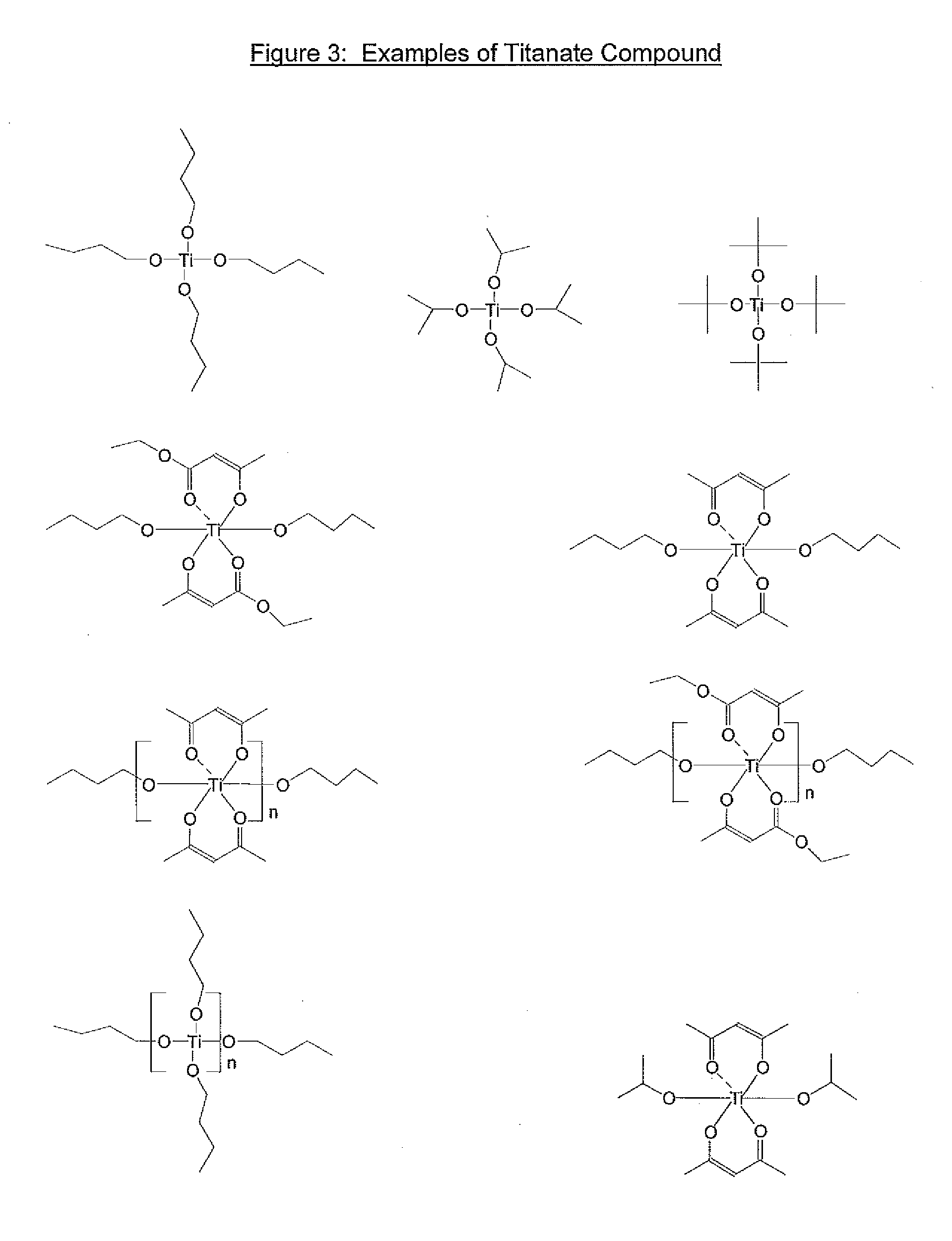Underlayer composition and process thereof
a composition and layer technology, applied in the field of underlayer composition and process thereof, can solve the problems of back reflectivity, thin film interference effect and reflective notching, and change in critical line width dimensions
- Summary
- Abstract
- Description
- Claims
- Application Information
AI Technical Summary
Benefits of technology
Problems solved by technology
Method used
Image
Examples
synthesis example
[0044]12.9 g of isopropyl hexafluoroisopropanol methacrylate (MA-BTHB-OH), 7.7 g of benzyl methacrylate, 6.8 g of 2-hydroxyethyl methacrylate and 8.5 g of glycidyl methacrylate, were mixed with 160 g of propyleneglycol monomethyl ether (PGME) solvent. The polymerization reaction took place in the presence of 1.5 g of azobisisobutyronitrile (AIBN) at 75° C. under nitrogen for 6 hours. After cooling down to room temperature, the reaction mixture was precipitated in deionized (DI) water. The white polymer solid was washed and dried under vacuum at 45° C. with a yield of 35.5 g (99%). The weight average molecular weight measured by GPC (Mw) was 18,000.
synthesis example 2
[0045]9.7 g of MA-BTHB-OH, 5.8 g of benzyl methacrylate, 5.1 g of 2-hydroxyethyl methacrylate and 6.4 g of glycidyl methacrylate, were mixed with in 120 g of tetrahydrofuran (THF) solvent. The polymerization reaction took place in the presence of 1.0 g of AIBN at 75° C. under nitrogen for 20 hrs. After cooling down to room temperature, the reaction mixture was precipitated in Dl water. The white polymer solid was washed and dried under vacuum at 45° C. with a yield of 26.5 g (99%) The Mw of polymer measured by GPC was 19,000.
synthesis example 3
[0046]15.0 g of MA-BTHB-OH, 6.0 g of styrene, 10.0 g of 2-hydroxypropyl methacrylate and 19.0 g of glycidyl methacrylate, were mixed in 200 g of propylene glycol monomethyl ether acetate (PGMEA) solvent. The polymerization reaction took place in the presence of 0.97 g of AIBN at 75° C. under nitrogen for 24 h. After cooling down to room temperature, the reaction mixture was precipitated in DI water. The white polymer solid was washed and dried under vacuum at 45° C. with a yield of 50.0 g (>99%). The Mw of polymer measured by GPC was 18,500.
PUM
| Property | Measurement | Unit |
|---|---|---|
| mole % | aaaaa | aaaaa |
| refractive index | aaaaa | aaaaa |
| refractive index | aaaaa | aaaaa |
Abstract
Description
Claims
Application Information
 Login to View More
Login to View More - R&D
- Intellectual Property
- Life Sciences
- Materials
- Tech Scout
- Unparalleled Data Quality
- Higher Quality Content
- 60% Fewer Hallucinations
Browse by: Latest US Patents, China's latest patents, Technical Efficacy Thesaurus, Application Domain, Technology Topic, Popular Technical Reports.
© 2025 PatSnap. All rights reserved.Legal|Privacy policy|Modern Slavery Act Transparency Statement|Sitemap|About US| Contact US: help@patsnap.com



